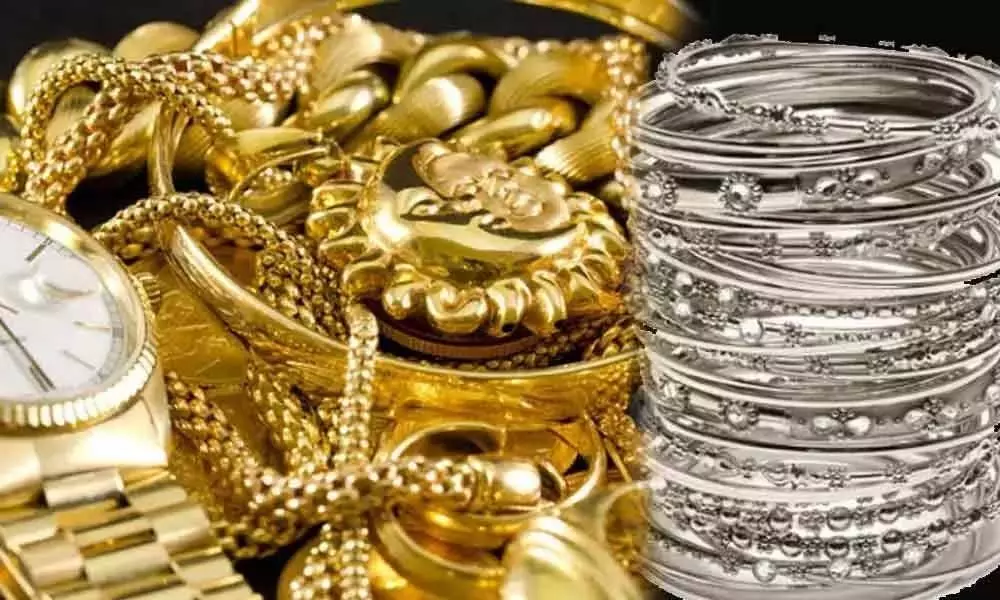As global economic uncertainties persist, precious metals have regained their luster among investors seeking stability. On July 6, 2024, gold prices across major Indian cities showed significant upward momentum, with silver following closely behind. This price movement reflects growing safe-haven demand amid fluctuating equity markets and geopolitical tensions.

Current Precious Metal Rates in Key Indian Markets
In Mumbai’s Zaveri Bazaar, the country’s largest bullion market, 24-carat gold closed at ₹6,450 per gram, marking a 1.8% increase from the previous week. Silver prices jumped even more dramatically, reaching ₹82,500 per kilogram – a 3.2% weekly gain that outpaced gold’s appreciation.
Other major cities showed similar trends:
-
Delhi: Gold at ₹6,480/gram; Silver at ₹82,800/kg
-
Chennai: Gold at ₹6,430/gram; Silver at ₹82,200/kg
-
Kolkata: Gold at ₹6,460/gram; Silver at ₹82,400/kg
-
Hyderabad: Gold at ₹6,440/gram; Silver at ₹82,300/kg
Drivers Behind the Precious Metals Rally
Several interconnected factors are fueling the current surge:
-
Global Economic Uncertainty: Weak manufacturing data from China and Europe has renewed recession fears, prompting investors to shift assets into traditional safe havens.
-
Dollar Weakness: The US dollar index (DXY) has softened by 1.4% this week, making dollar-denominated commodities more attractive in international markets.
-
Central Bank Buying: The Reserve Bank of India continues its gold accumulation strategy, with recent reports indicating 8.7 tonnes added to reserves in Q2 2024.
-
Festival Demand: Early stockpiling by jewelers ahead of the upcoming wedding season is creating additional demand pressure in domestic markets.
Market Outlook and Investment Considerations
Analysts at the India Bullion and Jewellers Association (IBJA) suggest the rally may have further room to run. “We’re seeing strong physical buying combined with futures market positioning that suggests institutional investors are rebuilding precious metal allocations,” noted IBJA research head Rajesh Purohit.
For retail investors considering precious metal exposure, several options exist:
-
Physical Metal: Ideal for those wanting tangible assets, though storage and purity verification present challenges
-
Sovereign Gold Bonds: Government-backed instruments offering interest income plus capital appreciation
-
ETF Options: Gold and silver ETFs provide exchange-traded convenience with high liquidity
-
Futures Contracts: For sophisticated investors comfortable with leverage and margin requirements
Regional Price Variations Explained
The slight price differences between cities stem from multiple factors:
-
Local taxes and octroi charges
-
Transportation costs from refining centers
-
Regional demand variations
-
Premiums charged by local associations
Mumbai typically shows the narrowest spreads to international prices due to its status as India’s bullion trading hub. Other cities incorporate additional supply chain costs that create modest premiums.
Historical Context and Future Projections
The current gold price represents a 14.5% year-to-date increase in rupee terms, outperforming the Nifty 50’s 8.2% return over the same period. Silver’s volatility remains pronounced – while up 18.3% since January, it has seen three 5%+ corrections during that timeframe.
Looking ahead, market participants should monitor:
-
US Federal Reserve interest rate decisions
-
Crude oil price movements (affecting rupee stability)
-
Domestic inflation trends
-
Rural demand recovery post-monsoon
Practical Advice for Buyers
Consumers considering jewelry purchases may benefit from:
-
Timing acquisitions around monthly price dips
-
Verifying BIS hallmarks on all purchases
-
Comparing making charges across jewelers
-
Exploring gold-backed financing options
Investors should note that import duties (currently 12.5% on gold) and GST (3%) create a persistent premium of 8-10% over international prices in the Indian market.
Conclusion
The simultaneous rise in gold and silver prices reflects their dual role as both inflation hedges and crisis insurance in investment portfolios. With economic crosscurrents likely to persist through 2024, precious metals may continue seeing strong demand from both institutional and retail participants. Market watchers recommend maintaining balanced exposure, with many advisors suggesting 5-15% portfolio allocations to gold as part of a diversified asset mix.
For daily price updates and customized city-specific rate alerts, readers can subscribe to our premium metals tracking service, which provides real-time data from 35 Indian bullion markets.






